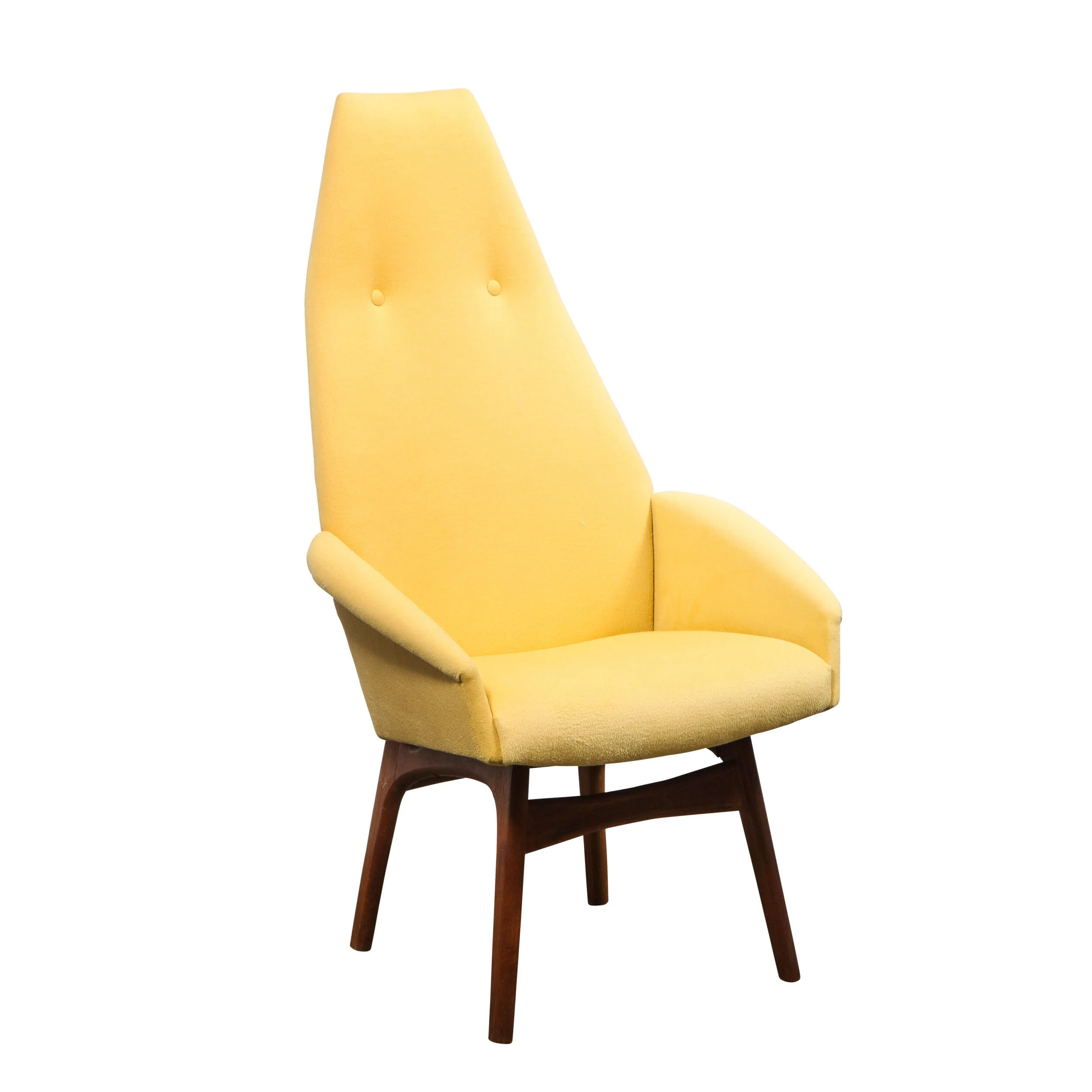Mid-Century Walnut & Pale Aquamarine Velvet Slipper Chair by Billy Haines















Mid-Century Walnut & Pale Aquamarine Velvet Slipper Chair by Billy Haines
This stylish and beautifully proportioned Mid-Century Modernist Slipper Chair Attributed Billy Haines originates from the United States, Circa 1950. It features a large upholstered segment with tapered walnut supports and framing in a lovely hand-rubbed finish which pairs well with the light blue velvet. The seat is large and comfortable with a flat front surface which curves backwards, and an arching low profile wing-back support. Billy Haines was an actor and interior designer with illustrious clients and highly successful throughout his career, with innovative modern designs characteristic of Mid-Century Modernist furniture. This lovely slipper chair will style beautifully in a wide array of spaces and settings, from Mid-Century Modernist to Contemporary and Minimal Interiors. In Mint Restored Condition.
American, Circa 1950
Dimensions:
Height: 26 in (66.04 cm) x Width: 33 in (83.82 cm) x Depth: 24 in (60.96 cm)
Seat Height: 13 in (33.02 cm)
Creator: William Billy Haines (Maker)
Style: Mid-Century Modern (Of the Period)
Materials and Techniques: Velvet, Walnut
Place of Origin: United States
Period: 1950-1959
Date of Manufacture: circa 1950
Condition: Excellent. Refinished. Reupholstered.
Reference Number: LU793442071772
WILLIAM ‘BILLY’ HAINES
Charles William Haines (January 2, 1900 – December 26, 1973) was a prominent American actor and interior designer whose career spanned two distinct industries. Haines was discovered in 1922 by a talent scout and signed with Goldwyn Pictures. His breakthrough came with the film The Midnight Express, and his role in Brown of Harvard (1926) solidified his persona as a charming, wisecracking leading man. By the late 1920s, Haines had become a popular box-office star. However, his refusal to deny his homosexuality led to the abrupt end of his acting career in the 1930s, as Hollywood’s rigid studio system demanded conformity. Rather than hiding his identity, Haines chose to leave the industry, marking the end of his film career in 1935.
Haines was born in Staunton, Virginia, into a modest family. He ran away from home at 14 with a companion he referred to as his “boyfriend,” and the two found work at a DuPont factory in Hopewell, Virginia. After the town was destroyed by fire, Haines relocated to New York City, immersing himself in the bohemian community of Greenwich Village. There, he worked various jobs before being discovered by talent scout Bijou Fernandez, who launched his film career.
Despite his initial success in Hollywood, Haines' personal life, particularly his relationship with Jimmie Shields, posed challenges in an era of deep social conservatism. Haines and Shields began living together as a committed couple in 1926. Although their relationship was an open secret in Hollywood, the studios pressured Haines to conform to their expectations. After his career as an actor ended, Haines seamlessly transitioned into interior design, launching a successful business with Shields.
The couple’s design business quickly flourished, with Haines becoming the go-to designer for Hollywood’s elite. His early clients included stars such as Joan Crawford, Carole Lombard, Gloria Swanson, and Marion Davies. Haines became known for his impeccable taste, combining vintage and modern elements to create chic, elegant interiors. One of his most famous projects was designing Joan Crawford’s all-white living room, a bold choice that helped cement his reputation as an interior designer. His approach to design became synonymous with Hollywood glamour, characterized by a blend of luxury, sophistication, and comfort.
Despite some controversy, including a false accusation of propositioning a local boy in Manhattan Beach that led to a violent attack by members of a white supremacist group, Haines' career in interior design remained strong. He continued to work with high-profile clients, including Frank Sinatra and Jack Warner. Later in his career, Haines designed interiors for Ronald and Nancy Reagan, Betsy Bloomingdale, and the renowned "Sunnylands" estate for Walter and Leonore Annenberg.
Haines and Shields continued their business partnership until the early 1970s. Throughout his career, Haines stayed true to his principles, refusing to deny his identity, even at the cost of his acting career. His boldness in both his personal and professional life left a lasting impact on Hollywood. Haines passed away from lung cancer in 1973, leaving behind a legacy of timeless elegance in the world of interior design, and an example of courage and authenticity during a repressive era.











